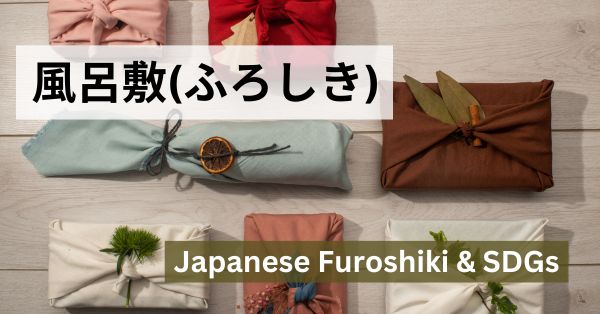Japan is known for its unique culture and traditions, one of which is the use of Furoshiki - 風呂敷(ふろしき). Furoshiki is a traditional Japanese cloth that is used for wrapping and carrying items, and it has been used in Japan for centuries. In recent years, Furoshiki has gained global attention for its eco-friendliness and contribution to achieving the Sustainable Development Goals (SDGs).
Furoshiki comes in different sizes, designs, and fabrics such as silk, cotton, and polyester. Its versatility makes it suitable for various purposes, from wrapping gifts to carrying groceries. It is estimated that one Furoshiki can replace up to 600 single-use plastic bags annually. By reducing waste, Furoshiki promotes SDG 12 - Responsible Consumption and Production.
Furoshiki also contributes to SDG 13 - Climate Action by reducing carbon emissions. Unlike plastic bags, which are made from fossil fuels and take hundreds of years to decompose, Furoshiki is made from renewable materials and is reusable. By using Furoshiki, individuals can reduce their carbon footprint and contribute to mitigating climate change.
Moreover, Furoshiki aligns with SDG 10 - Reduced Inequalities by promoting diversity and inclusivity. Furoshiki is a symbol of Japan's cultural heritage, and by embracing it, individuals can appreciate and respect different cultures. In addition, Furoshiki can be used by people of all ages, genders, and backgrounds, making it accessible to everyone.
Finally, Furoshiki supports SDG 3 - Good Health and Well-being by promoting hygiene and reducing the spread of diseases. During the COVID-19 pandemic, Furoshiki gained even more popularity in Japan as a tool for carrying and wrapping items, reducing the need to touch potentially contaminated surfaces.
Furoshiki is not just a traditional Japanese cloth, but also a sustainable and versatile tool that can contribute to achieving the SDGs. By promoting responsible consumption and production, reducing carbon emissions, promoting diversity and inclusivity, and promoting good health and well-being, Furoshiki aligns with multiple SDGs.
As more people around the world embrace Furoshiki, it has the potential to make a significant impact on achieving the SDGs and creating a more sustainable future.
Note: This post was written by ChatGPT and edited by the A Bit of Nippon team in order to provide information about Japan in English.
Furoshiki comes in different sizes, designs, and fabrics such as silk, cotton, and polyester. Its versatility makes it suitable for various purposes, from wrapping gifts to carrying groceries. It is estimated that one Furoshiki can replace up to 600 single-use plastic bags annually. By reducing waste, Furoshiki promotes SDG 12 - Responsible Consumption and Production.
Furoshiki also contributes to SDG 13 - Climate Action by reducing carbon emissions. Unlike plastic bags, which are made from fossil fuels and take hundreds of years to decompose, Furoshiki is made from renewable materials and is reusable. By using Furoshiki, individuals can reduce their carbon footprint and contribute to mitigating climate change.
Moreover, Furoshiki aligns with SDG 10 - Reduced Inequalities by promoting diversity and inclusivity. Furoshiki is a symbol of Japan's cultural heritage, and by embracing it, individuals can appreciate and respect different cultures. In addition, Furoshiki can be used by people of all ages, genders, and backgrounds, making it accessible to everyone.
Finally, Furoshiki supports SDG 3 - Good Health and Well-being by promoting hygiene and reducing the spread of diseases. During the COVID-19 pandemic, Furoshiki gained even more popularity in Japan as a tool for carrying and wrapping items, reducing the need to touch potentially contaminated surfaces.
Furoshiki is not just a traditional Japanese cloth, but also a sustainable and versatile tool that can contribute to achieving the SDGs. By promoting responsible consumption and production, reducing carbon emissions, promoting diversity and inclusivity, and promoting good health and well-being, Furoshiki aligns with multiple SDGs.
As more people around the world embrace Furoshiki, it has the potential to make a significant impact on achieving the SDGs and creating a more sustainable future.
Note: This post was written by ChatGPT and edited by the A Bit of Nippon team in order to provide information about Japan in English.


Comments